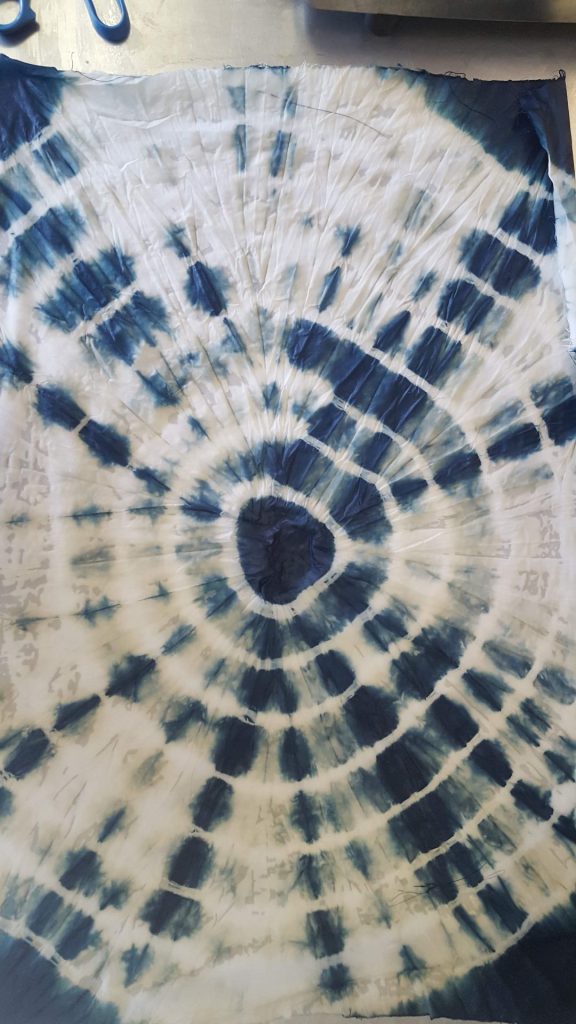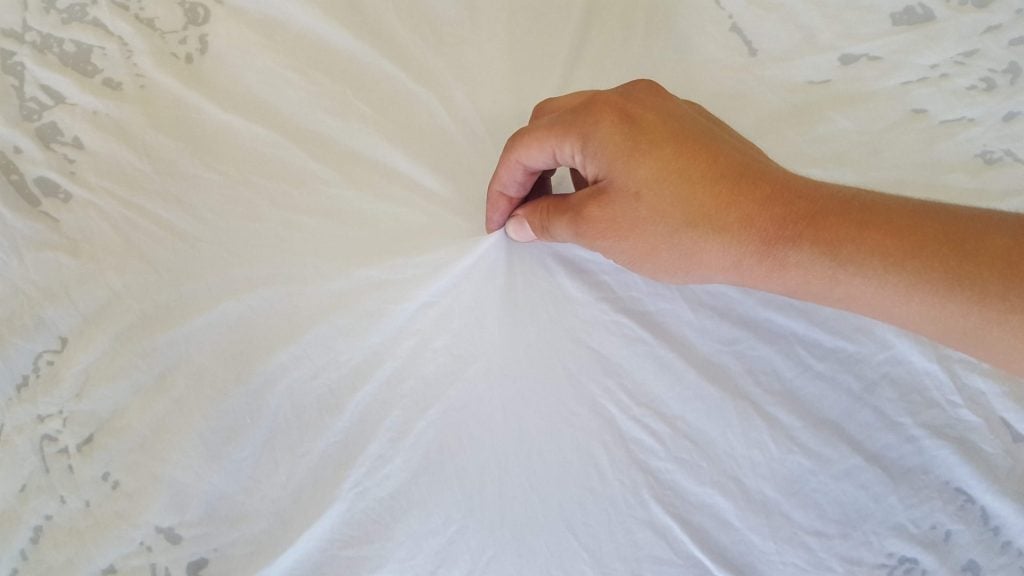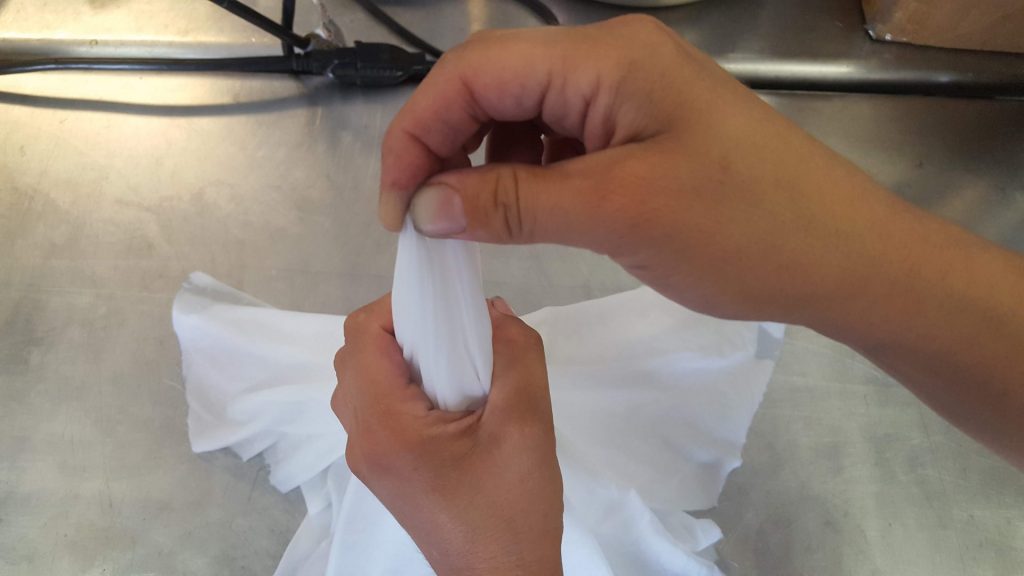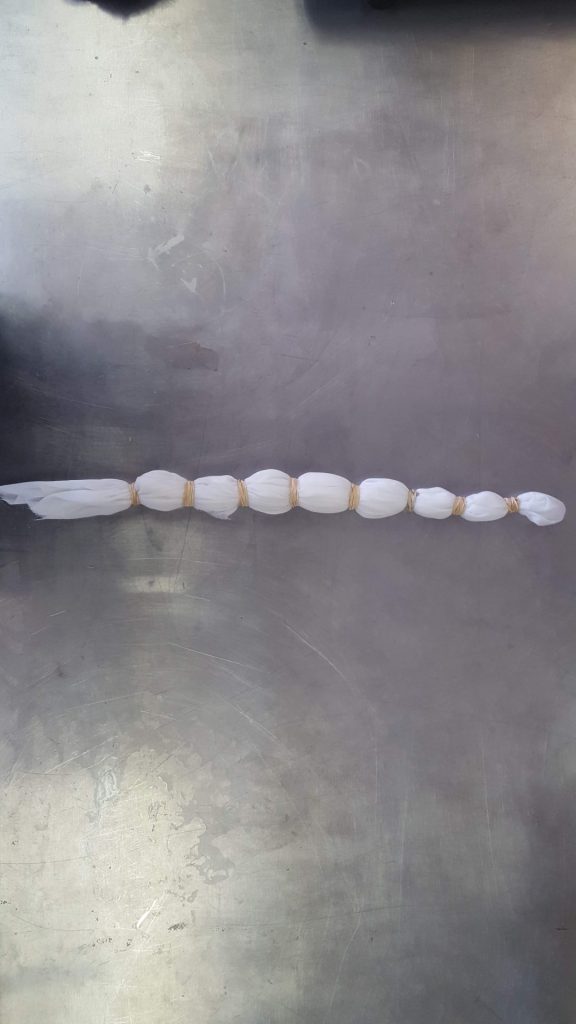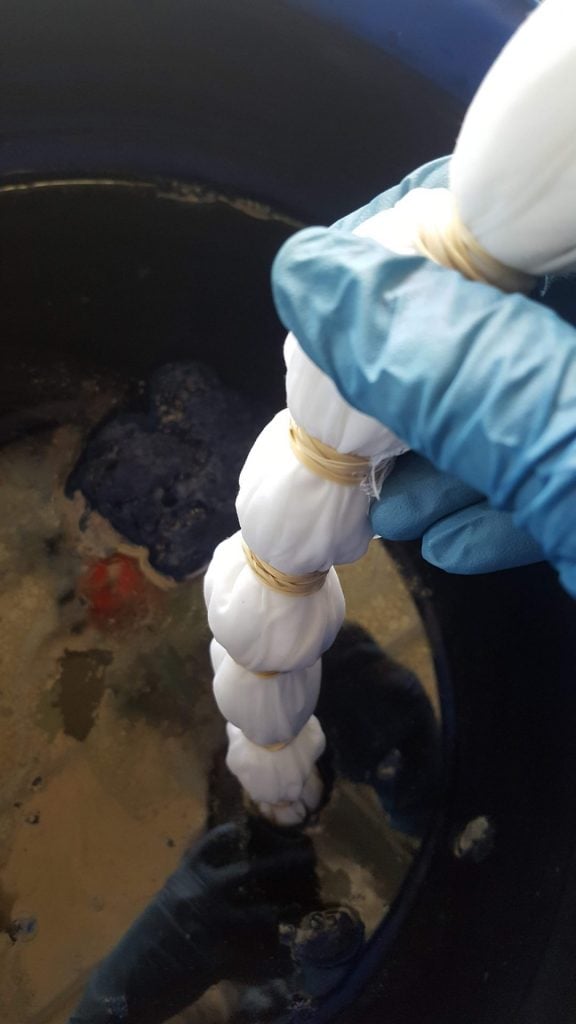There’s a holiday for everything so all hail National Tie-Dye Day!
According to Vox, did you know that historians’ knowledge of early techniques similar to tie-dye is limited by the fact that textiles decay faster than most other artistic mediums? This means surviving samples aren’t easy to come by. “‘Some of the earliest examples come from Peru, but tie-dye seems to have originated independently all over the world,’ says Lee Talbot, curator of George Washington University’s Textile Museum.”
We’ve created this National Tie-Dye Day how-to just for you to celebrate this sacred day to continue the tradition.
Not sure which indigo vat you want to try out for this? Choose one of four 1-2-3 vats here.
Before you begin, prepare your workspace for a messy process. Cover the surface you plan to work on with something you don’t mind getting wet and dirty and wear an apron and gloves.
Dampen your fabric and lay it out on a table or flat surface. Pick up the center of the fabric.
Lift the fabric up from the center so that all of the edges are hanging from your hand.
Working from the center, tightly wrap rubber bands around the fabric.
Continue in this manner to the end of the fabric.
Carefully add your bundle to the indigo vat. Keep it submerged in the indigo for 2 to 3 minutes, then remove it and let it rest. Repeat this step multiple times for darker shades of blue. It can take up to three 3-minute dips to get a dark color.
Remove the rubber bands and open the fabric bundle. Wait until all of the dyed parts are blue, not yellow or green. Rinse until the water runs clear. Air dry away from direct sunlight.

